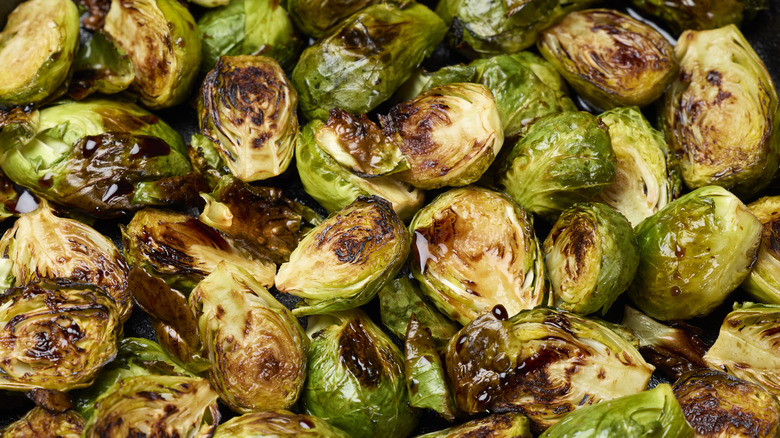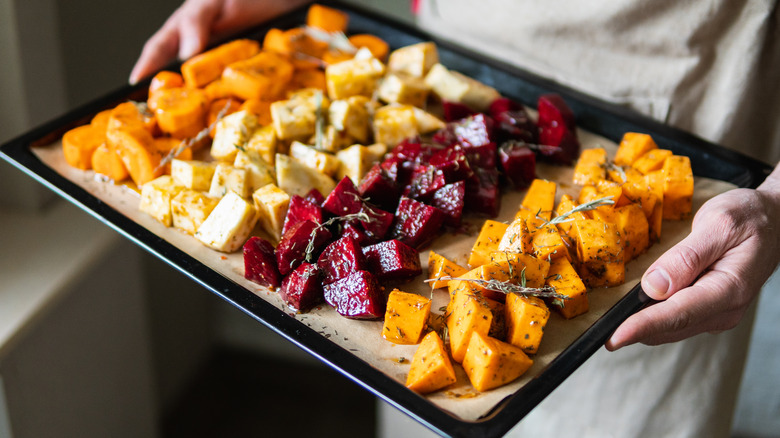The Delicious Reason Your Roasted Vegetables Should Be Extra-Charred
Roasting vegetables isn't just a simple, hands-off method that allows you to multitask in the kitchen; it also elevates their texture and flavors. The hot air and high temperatures of conventional ovens caramelize a vegetable's natural sugars, intensifying their essence and allowing them to better incorporate savory flavors from the oil and seasonings.
The char they take on in the oven is part of what upgrades the taste of roasted vegetables — setting them apart from their steamed, boiled, or even sautéed counterparts. The char is the crust that forms and adds a smoky, slightly bitter finish to each bite of roasted vegetables. It delivers a crunch and flavor boost that's hard to imitate with any other cooking method. Therefore, when you roast your veggies, you should ensure they acquire a bit of char on their edges or sides before removing them from the oven. It may take a few extra minutes, but the wait is crucial to achieving the desired complexity for your vegetable's flavor and texture profile. If you take them out before they char, you might as well steam them. They'll still be edible, but they won't provide that delightful crunch and depth of flavor you expect from roasted vegetables.
More roasting tips
Preparing your vegetables correctly before placing them in the oven is the key to a successful char. Whichever vegetable you decide to roast, enough oil and a uniform size are two important steps to getting there. A thorough coating of oil or fat is indispensable in helping vegetables brown and eventually char. Without that protective layer of fat, you're more likely to scorch your veggies. Regular olive oil, safflower oil, and avocado oil all have smoke points that can withstand standard roasting temperatures. As with sautéing, it's also important not to crowd veggies when you place them on your baking sheet because prevent a crispy texture.
Cutting vegetables into same-sized cubes, triangles, or chunks ensures that each veggie will cook at the same rate. If you put different-sized vegetable chunks on a baking sheet, the smaller bits will burn while you wait for the larger ones to char. If you want a proper char on all sides of your veggies, you'll need to turn, flip, or toss them halfway through the roasting process. Different vegetables have different roasting times, and the placement of your baking sheets and oven racks also affect cooking times, browning, and char. Baking sheets on the top rack will get more direct exposure to the heat source and will likely cook faster. They're also more susceptible to burning if you're not watchful.

